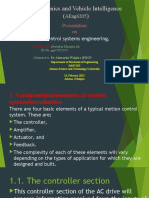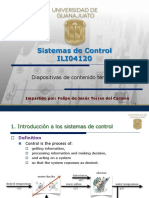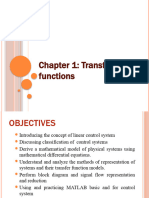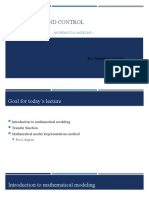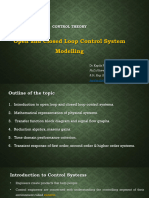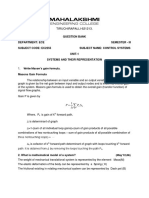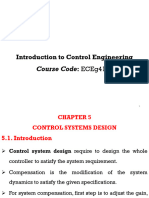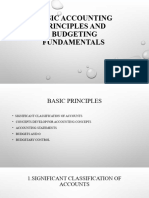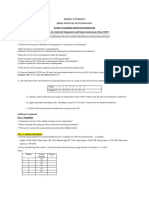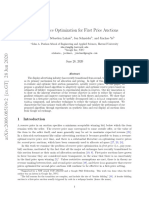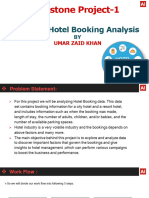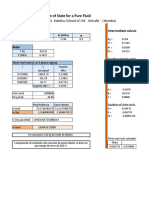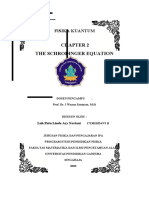0% found this document useful (0 votes)
40 views62 pagesControl System Modeling Basics
The document provides an introduction to control systems. It discusses that a control system is a collection of components arranged to regulate another system's behavior. Control systems aim to make a system's output variables behave in a prescribed way despite uncertainties or disturbances. There are two main types of control systems - open-loop and closed-loop systems. Closed-loop systems include feedback to automatically ensure the output matches the desired response. The document outlines various elements of control systems and provides examples of modeling and representing systems using transfer functions, block diagrams, and analogous mechanical and electrical systems.
Uploaded by
million shiferawCopyright
© © All Rights Reserved
We take content rights seriously. If you suspect this is your content, claim it here.
Available Formats
Download as PPTX, PDF, TXT or read online on Scribd
0% found this document useful (0 votes)
40 views62 pagesControl System Modeling Basics
The document provides an introduction to control systems. It discusses that a control system is a collection of components arranged to regulate another system's behavior. Control systems aim to make a system's output variables behave in a prescribed way despite uncertainties or disturbances. There are two main types of control systems - open-loop and closed-loop systems. Closed-loop systems include feedback to automatically ensure the output matches the desired response. The document outlines various elements of control systems and provides examples of modeling and representing systems using transfer functions, block diagrams, and analogous mechanical and electrical systems.
Uploaded by
million shiferawCopyright
© © All Rights Reserved
We take content rights seriously. If you suspect this is your content, claim it here.
Available Formats
Download as PPTX, PDF, TXT or read online on Scribd
/ 62
